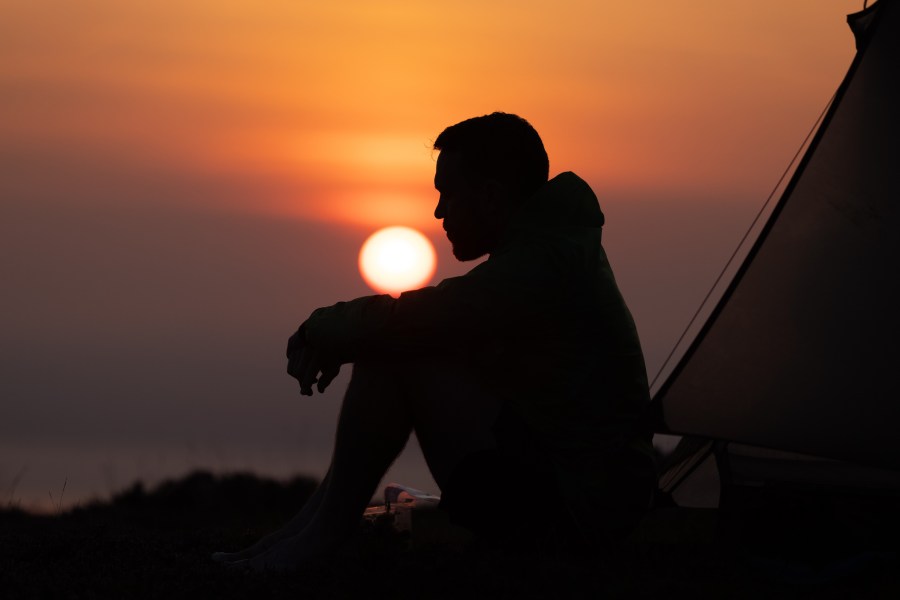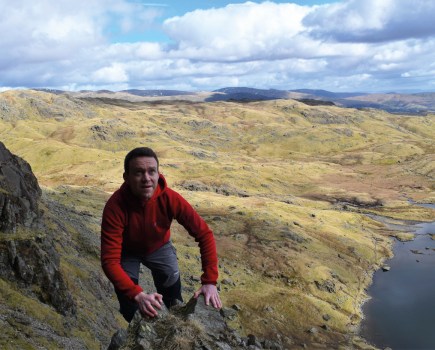In August, regular TGO contributor James Forrest set a new record for a self-supported, solo walk of the National Three Peaks. We caught up with him to find out what it was like.
James climbed Ben Nevis, Scafell Pike and Snowdon – and walked every mile in-between them – in 16 days, 15 hours and 39 minutes.
The inov-8 ambassador walked 17 marathon-distances in 17 days to complete his 500-mile journey on foot, setting what is believed to be a new self-supported record.
But why? We chat to the determined hiker about his adventure – and what motivates him to take on such hardcore hiking challenges.
So, let’s get straight to it – why on earth do you take on challenges like this?
I absolutely love challenging myself, pushing my boundaries and seeing what I can achieve in the great outdoors. I was very sporty and competitive as a child, and I think that mindset has been mirrored in the way I choose to enjoy the outdoors. Long, arduous journey aren’t for everyone, but personally I get a real endorphin rush from the exercise and a buzz from venturing outside my comfort zone. There’s a calming aspect too. I find the simple process of walking incredibly therapeutic – it works wonders for my mental well-being and brings contentment to my life.
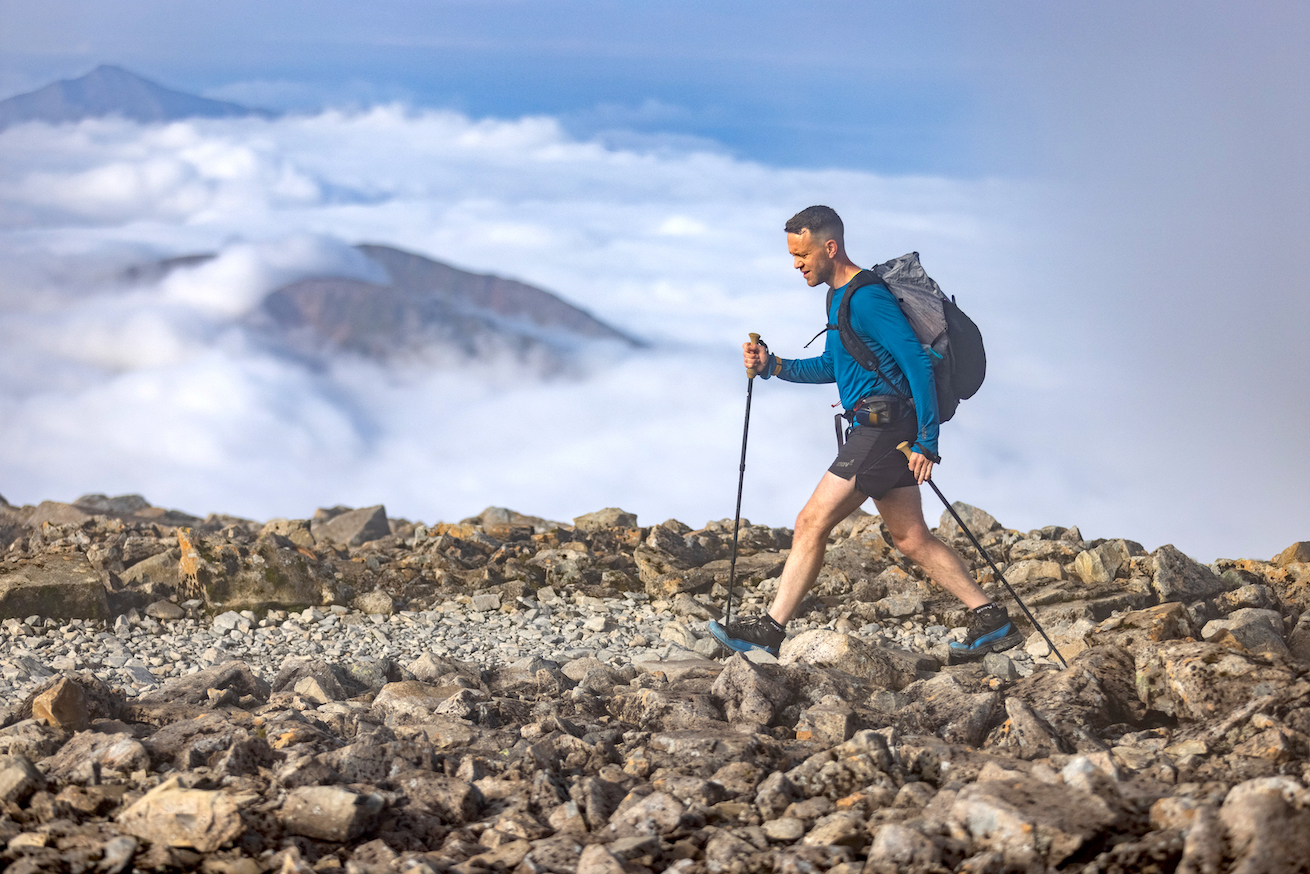
James climbing Ben Nevis, the first peak on his journey. Photo: Dave MacFarlane
Would it be wiser to take your time and enjoy the journey more?
For most people, 100% yes. But for me, I love this slightly sado-masochistic approach. The walk was a real rollercoaster: dizzying highs and crushing lows, with hardship and euphoria in equal measure – and that’s what a real adventure is all about. I often tell myself: “If everything is easy and gentle, it’s a holiday. When you start facing adversity and pushing the barriers of your perceived limits, then you know you’re on a bona fide adventure.” Plus, when you’ve been through the lows, the highs taste even sweeter.
What were the biggest challenges you encountered?
I suffered two pretty awful days of rain, including a 12-hour stint of non-stop downpours on the West Highland Way – that was really demoralising. But overall the weather was kind to me. Looking after my feet, trying to avoid blisters and sore spots, was a constant battle, but the biggest challenge was without doubt the final ascent of Snowdon. I had to dig really deep then and, for a fleeting few moments, I didn’t think I’d make it.
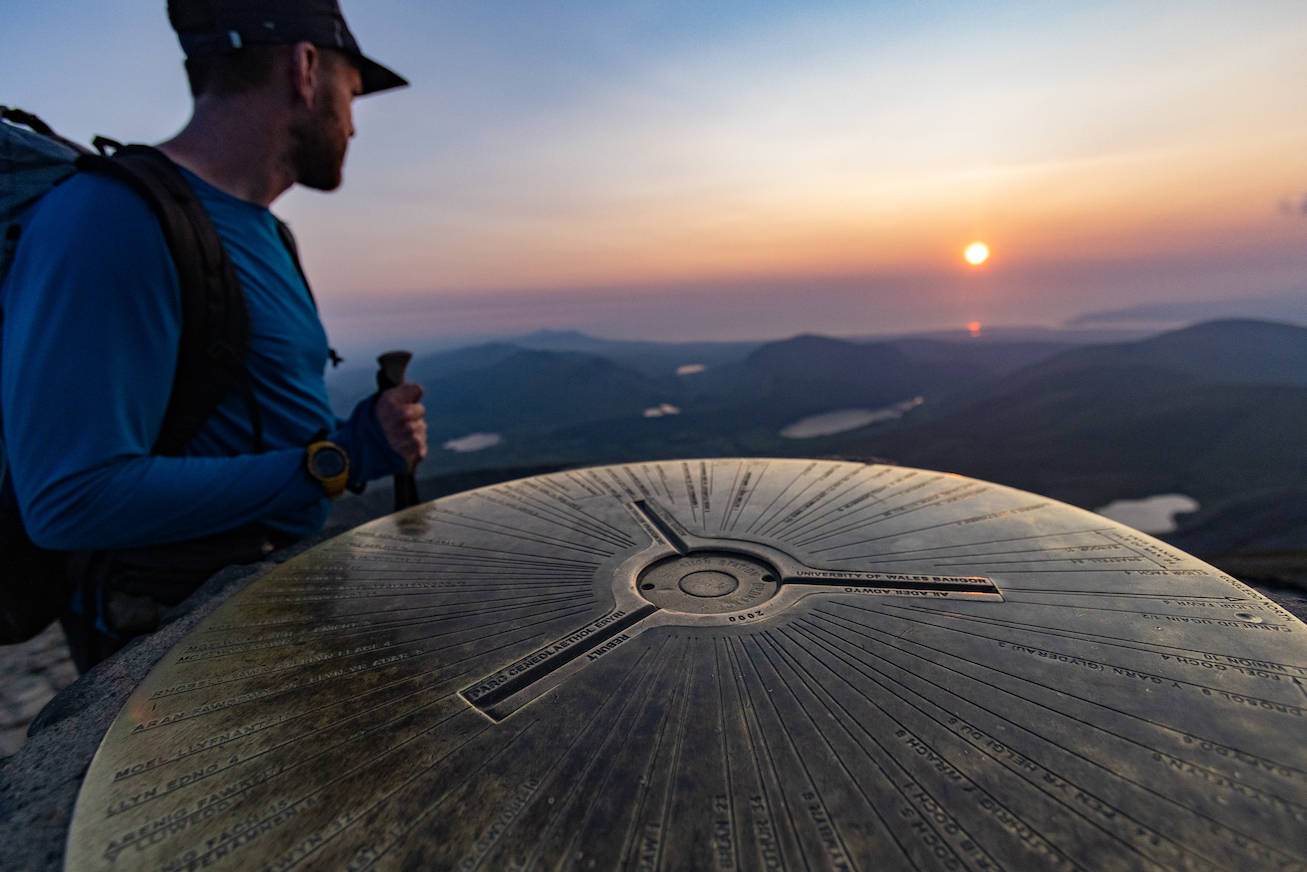
James takes in the view from the summit of Snowdon, his third and final peak. Photo: Dave MacFarlane
That sounds like a dramatic end to your journey – what happened?
After almost 500 miles of walking, I suddenly fell ill with sunstroke in Llanberis. I threw up violently and just felt absolutely awful: nauseous, dizzy and completely bereft of any energy. I’d come so far, maybe 98% of the whole journey, and now it looked like I might fall at the final hurdle. I just wanted to curl up in the embryo position and go to sleep. I felt so weak. It was a pivotal moment in my challenge. But I didn’t panic. I had some fizzy drinks and sweets, managed to regain my composure and somehow found the strength to plod, rather slowly, up and down Snowdon to complete my journey.
How did it feel to finish?It felt amazing – a real mix of emotions. Although I was so exhausted and spaced-out, I felt a little vacant and couldn’t really take it all in. I didn’t mind though. It’s a cheesy cliché, but on adventures I try not to fixate on the finish line. It’s about the whole journey, and I genuinely enjoyed the process.
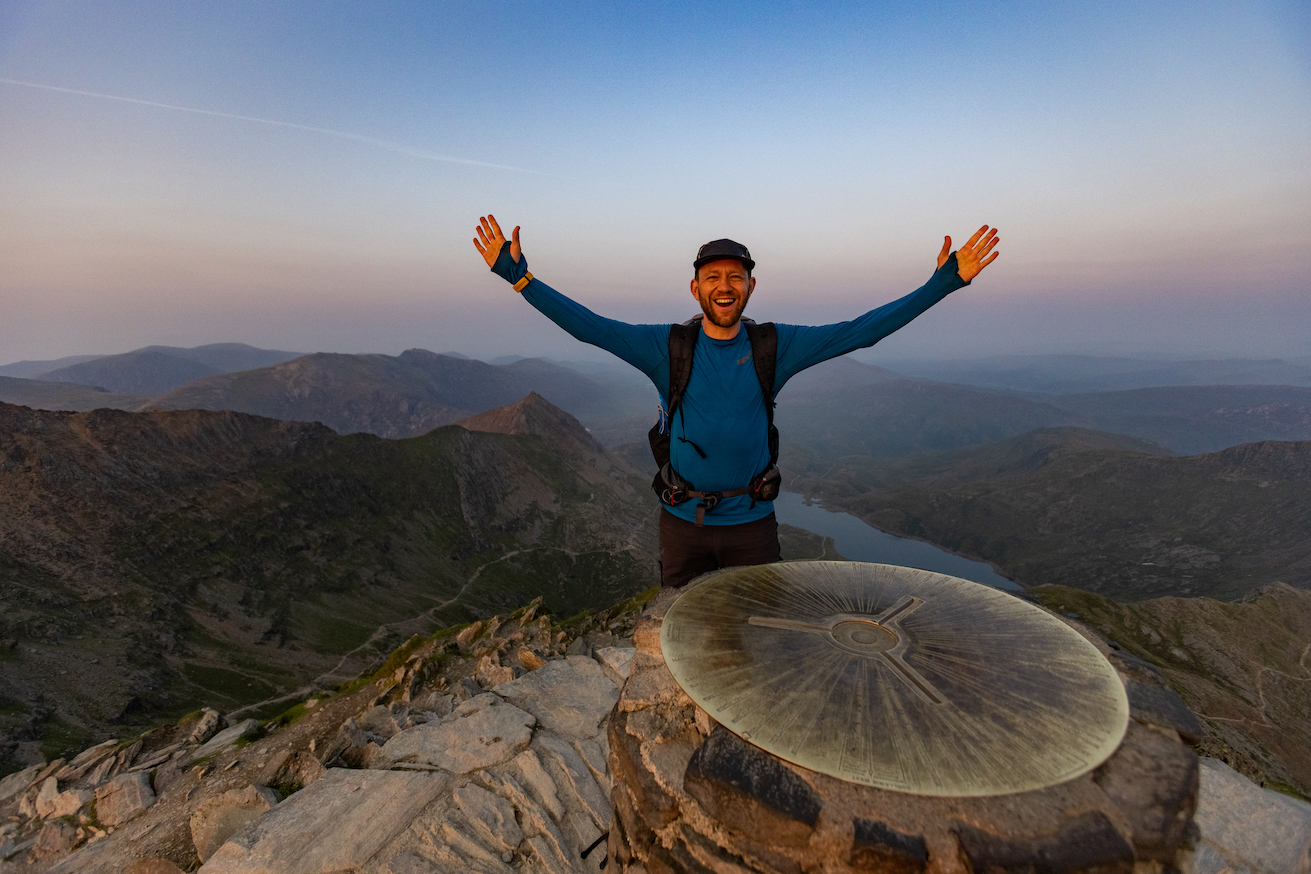
A triumphant James on the summit of Snowdon. Photo: Dave MacFarlane
How much did you break the record by?
The previous self-supported record of 19 days, 18 hours and 35 minutes was set by Tina Page in 2017 – so I shaved a few days off that time. However I was significantly slower than the overall supported record, held by ultra-runner Tom Mountney with 9 days, 11 hours and 39 minutes.
Everything is relative. Some people think I’m super-fast, but I see those runners as super-human (with a few screws loose!). I very much consider myself a hiker, just a fast one, and for me 5km/hr is the perfect speed: fast enough to make good progress, but slow enough to still appreciate your surroundings fully.
Were the urban sections of your route boring?
I thought I’d hate the built-up sections, but I found myself relishing the variety of this walk. The journey felt like an authentic insight into life in the UK, and every aspect of it. I saw so much in just 16 days, experiencing the real breadth of the UK’s landscapes, from sprawling urban jungles and industrial wastelands to remote mountains and farflung coastlines. Going through urban areas meant I could stay in hotels too, which felt like a real luxury after several nights in my tent.
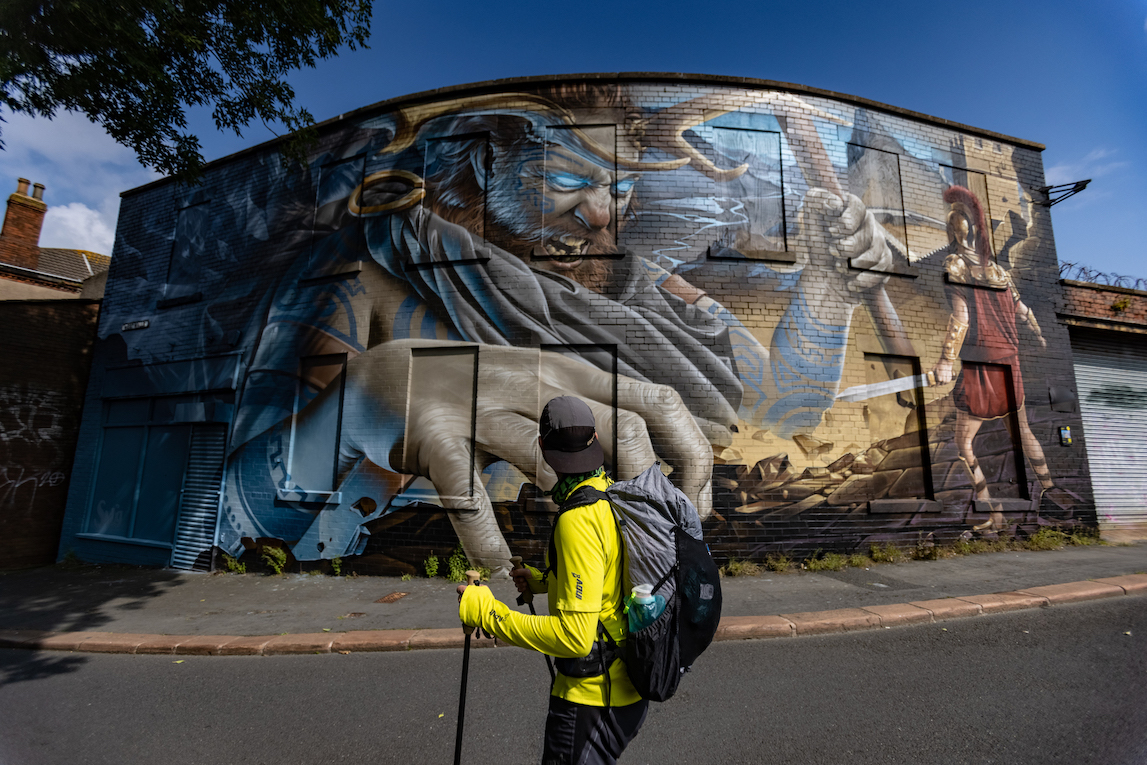
Walking through Carlisle. Photo: Dave MacFarlane
What were your favourites sections of the route?
I walked several lovely trails, including the West Highland Way, Clyde Walkway, Annandale Way, Lancaster Canal Path and North Wales Coast Path. The best moments were a magical wild camp in the hills above Conwy, watching the sunset, and camping close to Devil’s Staircase with a grandstand view of The Buachaille.
Was it tough walking alone?
Hiking alone with no support crew or pre-arranged help does pose certain challenges – you don’t have a team-mate to perk you up with a joke or smile when you’re feeling low – but I love the solitude and tranquillity. Being entirely self-reliant and pulling through the tough times feels epic.
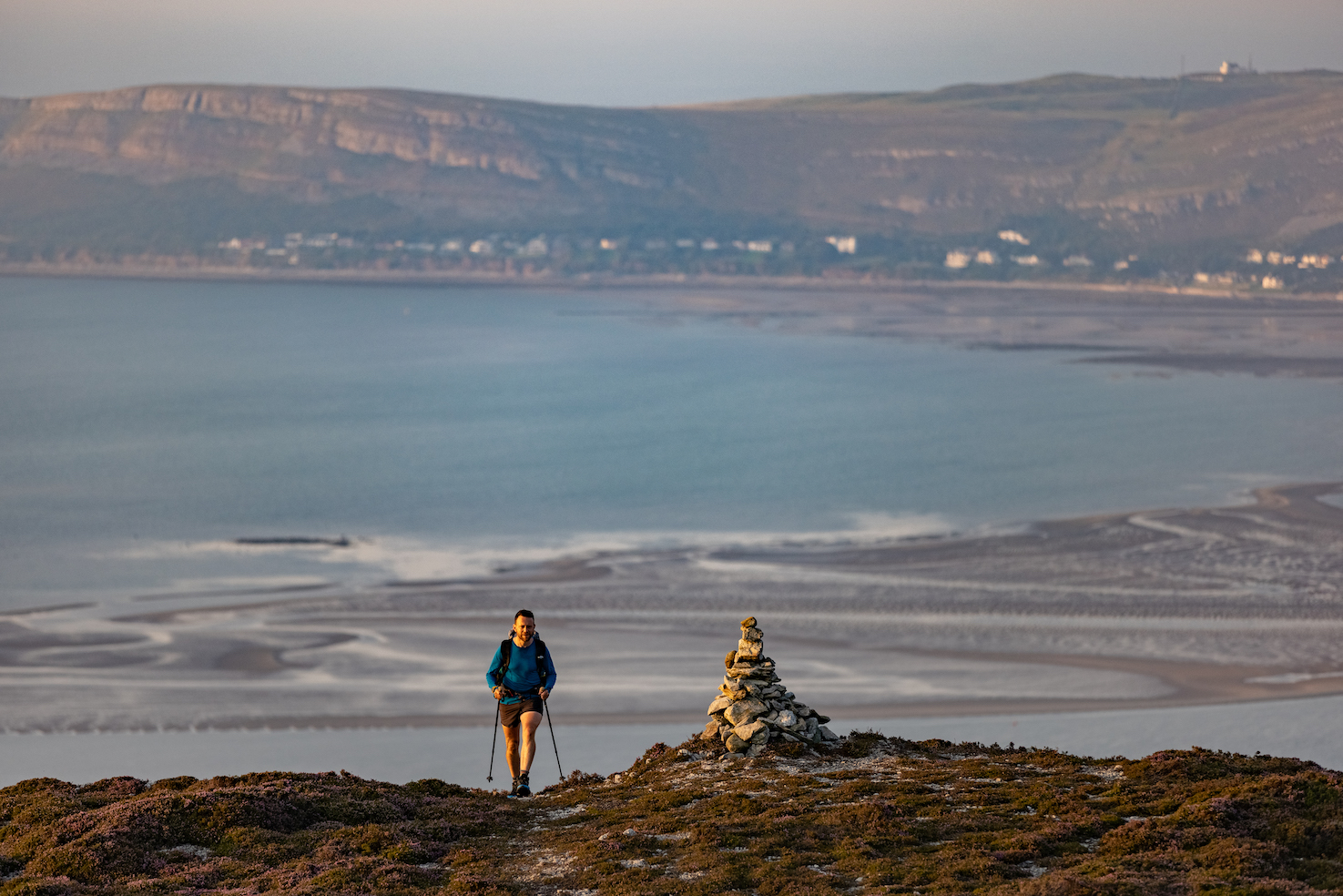
Hiking along the North Wales coast, near Conwy. Photo: Dave MacFarlane
Would you recommend this approach as an eco-friendly alternative to the ‘normal’ Three Peaks Challenge, which involves lots of driving on a motorway?
Definitely. I travelled to Fort William by train and coach, and returned home from Llanberis via train and bus (and a lift with a friend), so I was able to journey mostly by public transport. And, of course, the bit in-between was entirely human-powered. Being eco-friendly wasn’t a primary focus of my plans, but it felt great to know I was minimising my impact on the planet.
What gear did you use?
I’m sponsored by inov-8, which fits perfectly with my fast-hiking approach, so I exclusively wore inov-8’s lightweight clothing and footwear. For camping, my 4.6kg base weight was as ultralight and minimalist as possible. I packed a Gossamer Gear The One trekking pole tent,Thermarest NeoAir UberLite mat, PHD M.Degree 300 K Down sleeping bag and Zpacks Nero 38L frameless backpack.
You posted a video on Instagram recently saying that it’s important for people to find their own approach to the outdoors, and not necessarily think that going off and doing record-breaking challenges is the only way to do it. Why do you think that’s an important thing to say?
The beauty of the outdoors is that you can develop your own personal, intimate relationship with it – and that’s yours and yours alone to nurture and discover. It doesn’t matter whether that’s doing hardcore remote adventures or just gentle bimbles to a bench with a good view. It’s just about finding what works for you and brings you happiness and healing.
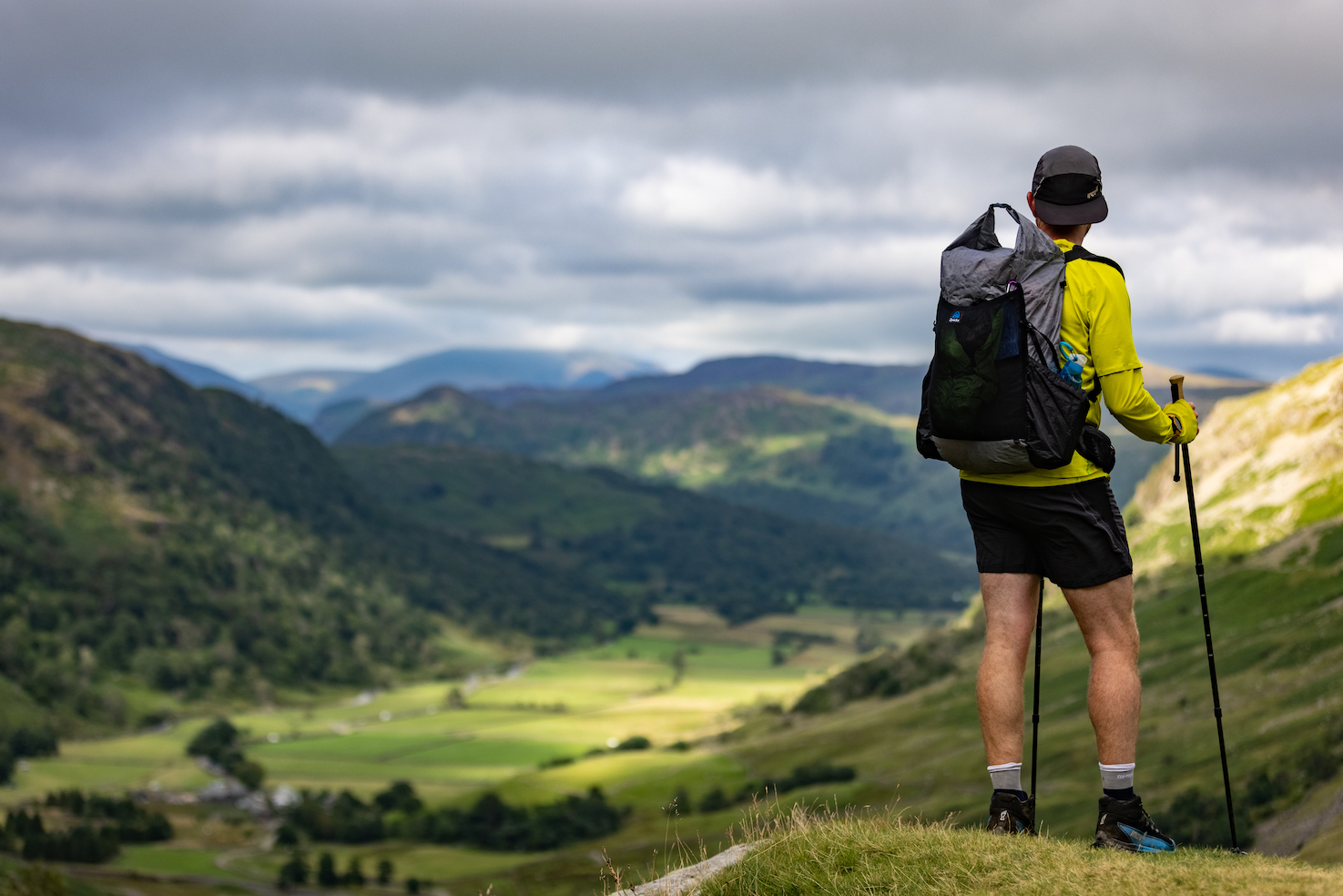
James on his way up Scafell Pike in the Lake District. Photo: Dave MacFarlane
Instagram seems to push people to compare themselves to others in an unhealthy way – and I hate that about social media. I wouldn’t ever want anyone to look at my Instagram feed and feel downbeat about their own approach to hillwalking. So that’s why I felt it important to speak out. There’s far too much trolling and negativity on social media as it is, and I like to try and spread positive vibes, as well as be completely honest and transparent about my adventures.

